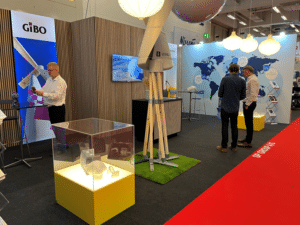Insulation with PUR and PIR can help improve the energy efficiency of buildings and reduce CO2 emissions. PUR and PIR are among the most effective insulation materials available, and they can achieve very high thermal performance with a minimal insulation thickness.
A large part of our energy consumption in buildings goes toward heating and cooling. Some of this energy consumption involves energy production through the burning of fossil fuels, resulting in CO2 emissions. The simplest and most cost-effective way to reduce energy demand and CO2 emissions is by making our buildings more energy-efficient.
At Tinby and Tinby Skumplast, we produce insulation materials in PUR and PIR, which are among the best insulation materials on the market with the highest thermal efficiency. When insulating with PUR and PIR, only a minimal material thickness is required to achieve maximum energy efficiency.
Our PUR materials can be used in all kinds of buildings and are just as easy to apply in existing structures as in new constructions. The material is also exceptionally durable and maintains its high performance throughout the building's lifetime – providing significant energy savings over the long term.
Foam boards in PUR and PIR from Tinby Skumplast can be used for walls, floors, and roofs, behind rain screens and under roof overhangs. The boards can be manufactured according to the customer's specific requirements.
PUR and PIR insulation boards do not absorb water, ensuring that their declared thermal conductivity is not increased by water absorption. Additionally, PUR and PIR foam are thermosetting materials that can be easily processed with cutting tools.
PUR and PIR foam are dimensionally stable within the temperature range they are exposed to during normal use. The foam material will not shrink or settle over time. As a result, no areas will develop in the building components where the insulation collapses or is degraded by pests.
> Read more about Tinby Skumplast's insulation materials in this newsletter.
> Read more about Tinby's insulation caps




